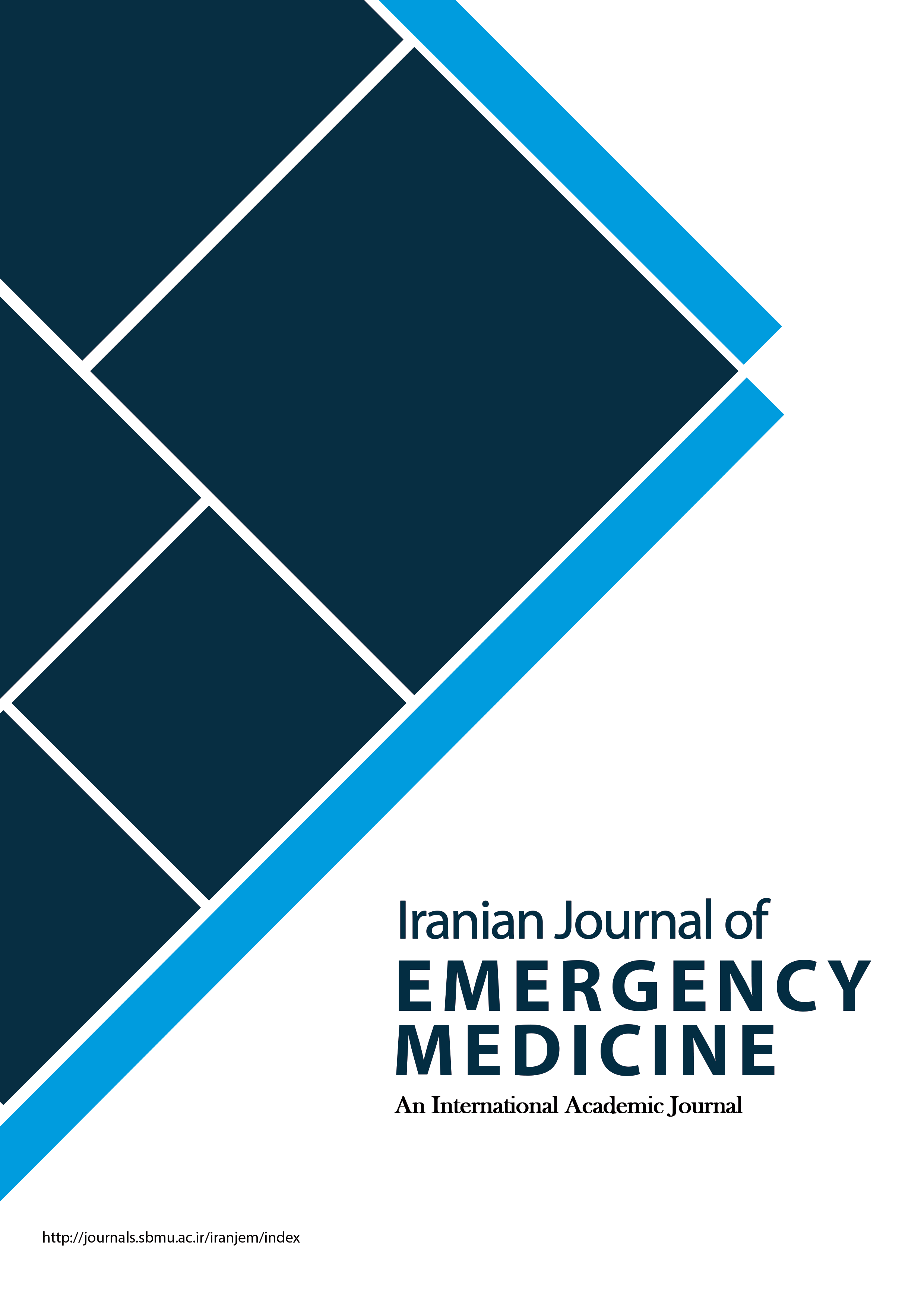The Effects of FOCUS-PDCA Methodology on Emergency Department Patient Disposition Index
Iranian Journal of Emergency Medicine,
Vol. 2 No. 2 (2015),
23 May 2015
,
Page 82-87
https://doi.org/10.22037/ijem.v2i2.8950
Abstract
Introduction: Hospital emergency is an important and unique department and prolonged stay of the patients in this ward leads to a decrease in the ability to serve other patients in need. Therefore, this study aimed to evaluate the ability of FOCUS-PDCA methodology to decrease waiting time of the procedures and improve index of decision-making within 6 hours in emergency department (ED). Methods: In this interventional before-after study, the effect of FOCUS-PDCA methodology on waiting time of the procedures and decision-making was evaluated in the ED of Sina Hospital, Tabriz, Iran in a 5-month period. Initially, a team of procedure definers defined the problematic procedures and suggested practical solutions to relieve them. Then, these solutions were practiced using appropriate programming, and finally the effects of these measures were analyzed using SPSS version 11.5 and independent t-test. Results: 5 months after intervention, mean waiting time for receiving consultation was reduced from 28.1 to 17 minutes (p < 0.001) and mean time for the results of a laboratory test to be ready was reduced from 70.26 to 37.66 minutes (p = 0.006). The number of patients who stayed in the ED for more than 6 hours, which was 101 in April, decreased to 52 in November (p = 0.002). The index of patient disposition in less than 6 hours increased from 94.71% in April to 96.87% in November. Conclusion: Based on the results of this study, it seems that carrying out FOCUS-PDCA methodology can decrease waiting time of the procedures and improve patient disposition index in the ED.- دپارتمان اورژانس؛ بهبود کیفیت؛ بیماران
How to Cite
References
Lee G, Endacott R, Flett K, Bushnell R. Characteristics of patients who did not wait for treatment in the emergency department: a follow up survey. Accid Emerg Nurs. 2006;14(1):56-62.
Sprivulis PC, Da Silva J, Jacobs IG, Frazer AR, Jelinek GA. The association between hospital overcrowding and mortality among patients admitted via Western Australian emergency departments. Med J Aust. 2006;184(5):208-12.
Rahmati F, Shahrami A, Baratloo A, et al. Failure Mode and Effect Analysis in Increasing the Revenue of Emergency Department. Iran J Emerg Med. 2015;2(1):20-7.
Baratloo A, Maleki M. Description of a Working Day as a Senior Emergency Medicine Resident; Burning Candle at Both Ends! Emergency. 2015;3(1):1.
Mohtasham Amiri Z, Haghdoost Z, Mohseni M, Asadi P, Kazemnezhad Leili E. Patients discharged before and after presence of medical emergency specialists. Holistic Nurs Midwifery J. 2014;24(1):64-70.
Baratloo A, Rahmati F, Forouzanfar MM, Hashemi B, Motamedi M, Safari S. Evaluation of Performance Indexes of Emergency Department. Iran J Emerg Med. 2015;2(1):[In press]. [Persian].
Hatamabadi H, Alimohammadi H. Reasons for long-stay admission in a typical overcrowded emergency of a teaching hospital in Tehran capital city. Pajoohandeh J. 2008;13(1):71-5. [Persian].
Salehi T, Nayeri ND, Rashidian A, Mohammadi E. Investigating the Effect of Clinical Governess Approach on Patients’ Length of Stay in Emergency Department: an Action Research Study. Acta Med Iran. 2014;52(2):137-45.
Tabibi SJ, Najafi B, Shoaie S. Waiting time in the emergency department in selected hospitals of Iran University of Medical Sciences in 2007. Pejouhesh. 2009;33(2):117-22. [Persian].
Hashemi B, Baratloo A, Rahmati F, et al. Emergency Department Performance Indexes Before and After Establishment of Emergency Medicine. Emergency. 2013;1(1):20-3.
Shahrami A, Rahmati F, Kariman H, et al. Utilization of Failure Mode and Effects Analysis (FMEA) Method in Increasing the Revenue of Emergency Department; a Prospective Cohort Study. Emergency. 2013;1(1):1-6.
Kariman H, Joorabian J, Shahrami A, Alimohammadi H, Noori Z, Safari S. Accuracy of emergency severity index of triage in Imam Hossein hospital-Tehran, Iran (2011). J Gorgan Uni Med Sci. 2013;15(1):115-20.
Holland C, Cason CL, Prater LR. Patients Recollections of Critical Care. Dimens Crit Care Nurs. 1997;16(3):132-43.
Singh VK. PDCA Cycle: A Quality Approach. Uttahan J Manag Sci. 2013;1(1):89-96.
Saxena S, Ramer L, Shulman IA. A comprehensive assessment program to improve blood‐administering practices using the FOCUS–PDCA model. Transfusion (Paris). 2004;44(9):1350-6.
Bader MK, Palmer S, Stalcup C, Shaver T. Using a FOCUS-PDCA quality improvement model for applying the severe traumatic brain injury guidelines to practice: process and outcomes. Evid Based Nurs. 2003;6(1):6-8.
Mehrolhasani M, Yazdi Feyzabadi V, Barfeh Shahrbabak T. Assessing Performance of Kerman Province`s Hospitals Using Pabon Lasso Diagram between 2008 and 2010. J Hospital. 2000;12(4):99-108.
Redick EL. Applying FOCUS-PDCA to solve clinical problems. Dimens Crit Care Nurs. 1999;18(6):30-5.
Aghdasi NM. Effect of FOCUS-PDCA performance in the activity of emergency department of Shahid Mahalati hospital of Tabriz. MilMed J. 2009;10(4):277-82.
- Abstract Viewed: 1308 times
- PDF (فارسی) Downloaded: 654 times
- HTML (فارسی) Downloaded: 73 times



